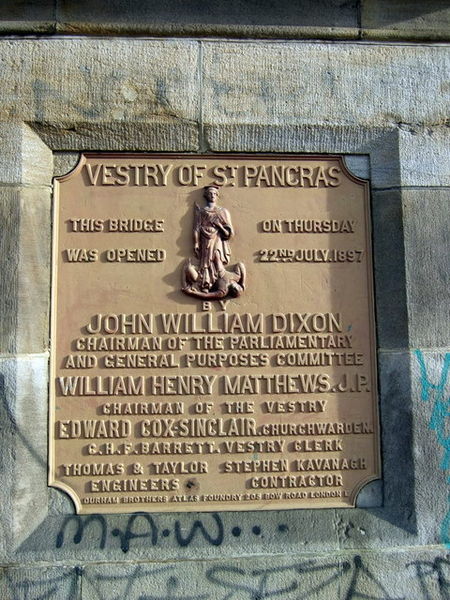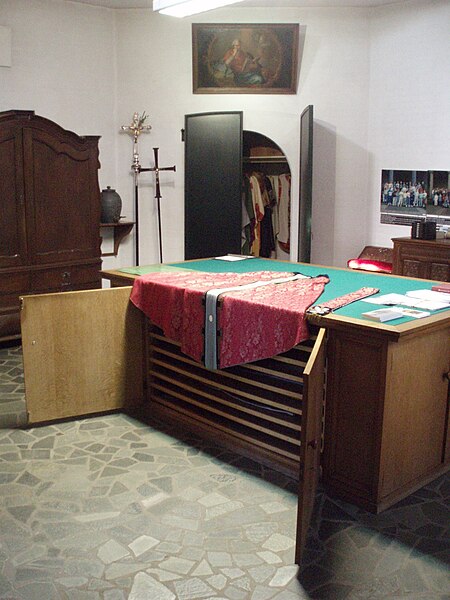A vestry was a committee for the local secular and ecclesiastical government of a parish in England, Wales and some English colonies, which originally met in the vestry or sacristy of the parish church, and consequently became known colloquially as the "vestry". At their height, the vestries were the only form of local government in many places and spent nearly one-fifth of the budget of the British government. They were stripped of their secular functions in 1894 and were abolished in 1921.
Notice dated April 1843 (which would have been pinned to the church door) calling a meeting of the select vestry of the parish of St Bees, for rating and assessing property in the parish to raise money for the repair of the church and the provision of ornaments and other necessary goods for the coming year. It is signed by the Rev R P Buddicom, vicar of St Bees, and three of the four churchwardens
Parish chest in St Mary's Church, Kempley, Gloucestershire.
Satirical cartoon of the select vestry of St. Paul's, Covent Garden. Thomas Jones 1828
A plaque commemorating an 1897 bridge building initiative in London. George Bernard Shaw was elected to the St Pancras vestry in 1897. It became the Metropolitan Borough of St Pancras in 1900.
A sacristy, also known as a vestry or preparation room, is a room in Christian churches for the keeping of vestments and other church furnishings, sacred vessels, and parish records.
Sacristy with a sacristy credens (a cabinet with wide and very shallow drawers in which vestments and hangings are stored). A chasuble and stole are laid out on top of it, ready to be put on.
Interior of the sacristy at St. Michael Church in Keminmaa, Finland






